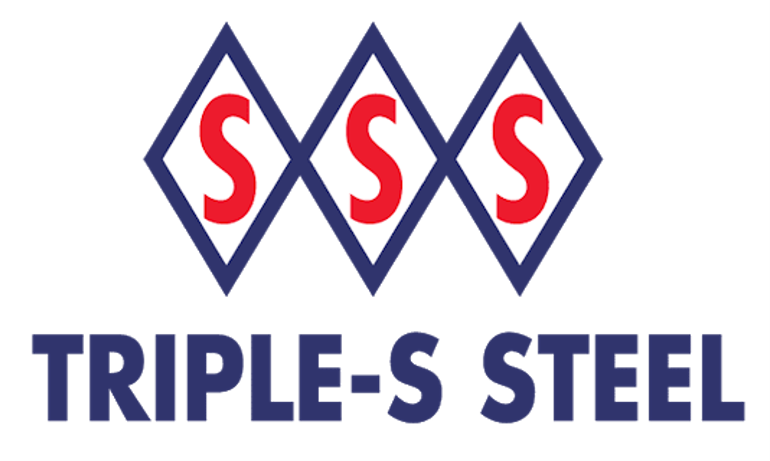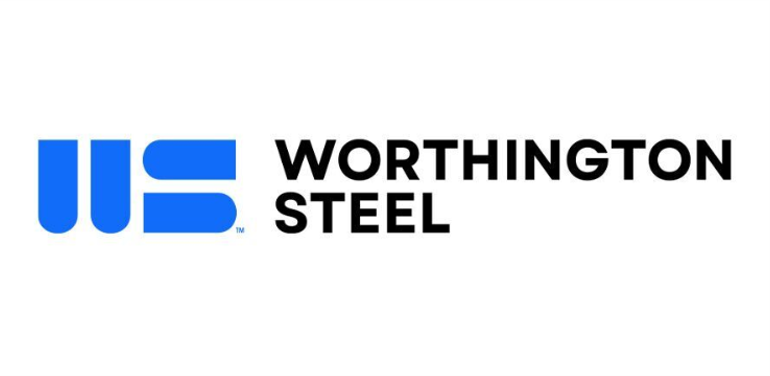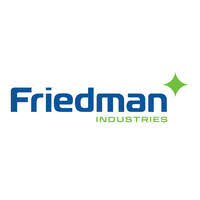Service Centers

Flat Rolled Market “Tsunami” Causes Some to Hesitate
Written by John Packard
May 1, 2016
Flat Rolled Steel Service Centers Comment About Their Relationship Customers
Late last week Steel Market Update started canvassing flat rolled steel distributors about their customer base in an effort to better understand the psyche of their customers. We found there are essentially three camps buying from the domestic steel service centers:
1) Contract customers tied to an index such as Platts. These customers buy regular tonnage, their prices adjust in line with the agreed to index arrangement with a lag to the general spot market and they don’t usually need to be concerned about what is happening with allocations and other issues that may exist in this market. Unless, of course, they bought light, in which case they potentially could have difficulties getting the balance of their needs covered.
2) Relationship buyers who are pseudo contract customers – they tend to buy from suppliers with whom they have developed a relationship. Steel prices can be quarterly (with the service center normally buying the full quarter’s worth of material at the time the order is placed) or monthly. Some steel buyers attempt to “time” the market whereby they purchase material at a perceived low price and stock up. They also try to use their relationship to keep price increases in check whenever possible.
3) Pure spot buyers. They only buy when they have a need and will shop for the lowest pricing.
Today, we are going to concentrate on the second category, relationship buyers.
![]() A Michigan based service center executive told us in a note on Friday afternoon:
A Michigan based service center executive told us in a note on Friday afternoon:
“We refer to “relationship” customers as “street buyers”, that is, they buy when needed from mills and big service centers but also try to time the market and load up when steel’s cheap. What we’re finding is that these guys are now out of their cheap, end of 2015 steel buys, and are coming back into the market only to find much higher prices and, in some cases, no availability. This market has swept over the flat rolled steel landscape like a “tsunami”, catching many service centers and end users alike without the necessary stocks to keep them operating at normal or peak levels. The mill lead times have led to them, and their supplying mills, no quoting future business well into the June/July period regardless of what the price will be then. Additionally, off shore material is just as hard to find now as many countries have directed their exports away from the US fearing additional governmental trade interference with imports here and, improving multiregional markets to sell into. This has certainly come as a shock to these guys but this just is another example of how quickly things can change in our business….why even USS may make money during this temporary upswing in prices.
As with most “supply pinched” markets, this one will eventually “normalize” once domestic operating rates increase and off shore steel starts flowing back into the US as it most certainly will as speculators see opportunities between inflated domestic and foreign prices… My guess is that we’ll seeing a market softening sometime in late 3rd or early 4th quarter 2016. ….Water, in this case steel, always seeks its own level as the “tsunami” washes out to sea….”
We also heard from a medium sized service center located in the Southwestern section of the United States. He told us, “We began educating our “Good customers” and SW Market regarding the changing climate of Global Steel Industry about 2 months or earlier ago. We have not had any pushback or reluctance as of yet. But we are stair stepping increases monthly (not just passing on increases, but maintaining our margins over and above the increases) With us being in SW and West Coast mills allocating tonnage and filling order books in 2 to 3 days, we have convinced customers to buy quickly when mills open their order books for that month. We do have an account with national presence where we raised prices locally and their corporate (Midwest) said they have not been alerted of any price increases. I find that difficult to believe, because we have not met any real resistance from the local manufacturer.”
From the Southeast we heard, “90% of our business is back to back type programs. We sell virtually no true spot. We buy to forecasted demand and keep the pipeline well stocked. Companies that don’t have defined programs – can’t make decisions quickly and/or have treated mills poorly – are going to be in a world of hurt over the next 120 days. Customers all have different crystal balls – and move when they are ready to move — we have very little impact on either – other than to give them our recommendations — so I really don’t care too much if they don’t make timely decisions or not. I am not aware of any of our customers not getting the tonnage they need – but anyone who tried to ramp up demand – especially within lead times – is probably going to be in trouble.”
In the Ohio Valley we heard, “All I can say is that steel buyers are faced with many difficult decisions. It is hard to make a decision to buy something at “X” when a week earlier you passed on an opportunity at “X minus 5%”. There is basically zero room for negotiation, and also a very short window for which to make purchasing decisions. I have seen several end users miss opportunities because they were trying to hold out for better numbers. Wish I had more time to elaborate but our spot book of business to off the charts. We are evaluating every opportunity coming in and making sure we do not allow companies to raid our inventory. In some cases it is taking us 2-3 days just to return a customer quote – but we have to make sure we are dotting every i and crossing every t.”
Another Midwest based service center told us, “I guess most of my customers fall into category #2. While we quote monthly to most of them and a few quarterly until a Purchase Order is in hand they are all published price variable from quote to close.
All of us are taken back by the quickness and steadfast way prices have climbed this last month. I don’t know anyone that can actually give a legitimate answer as to how and why they have stuck, so many (if not most) are caught off-guard and working to grasp the magnitude of this market. While scrap has definitely over-corrected, other raw materials seem to be languishing in overabundance and weak demand. There really is no demand increase anywhere that I have been able to see or hear about regarding steel and the products it goes into . So most people are sitting and waiting or buying the bare minimum required to fulfill orders. I don’t believe anyone has “stocked up” before this price increase round so maybe it will have legs to stick around a bit longer than anyone anticipated. I guess we shall see.
I am still not seeing a delay in getting material from the mills we deal with. Though they may be quoting inquiries a bit slower and with longer lead times, we are getting bombarded with releases for material that was supposed to be mid to late May for this week. There are some exceptions but for the most part material is available. I do feel the reluctance to except P.O. for June but I’ve also heard that its more allocation then a full order book. It has become an interesting market and keeps everyone on their toes.”
During a phone conversation with another Midwest based service center we were told they were struggling to be able to book their orders as quickly as the mill wants them. “Customers are very slow to respond,” we were told. We were told that after a tepid 1st Quarter their April business is “great.”
This executive also told us that if the mills are only producing 1.7 million tons per week as suggested by the AISI statistics then the market will need some imports. “China is out and we need steel in this market,” he said. “This is a protected market and I just wish the customers would get it. By the time they figure out what you have been telling them is true it’s too late – the mill order book is closed. We need to get these people [buyers] to react quicker.”
We also heard from a service center headquartered in Chicago. They told us, “…we’re not a super large buyer of flat rolled though we are a regular buyer from a very small number of suppliers. The mills we buy from seem to have room for us though of course we’re paying the current spot price. We don’t buy anything based on an index price, everything is spot. Because we’re always getting a customer commitment for the tons we buy, we’re willing to buy and are buying a specification that will last us typically 2 or 3 months though in some smaller usage items that may extend further. We haven’t had any customers push back hard and if they have and check the market they find that we’re in line with what’s going on. I wouldn’t characterize our customers as trying to time the market as they don’t buy more when prices are low and don’t buy less when prices are high, they just always seem to buy the amount they need when they need it. So far we haven’t had any customers who have asked us to carry them farther forward in time. This may change if the market gets frothier.”
One national service center chain told us the domestic mills have changed their mentality as the realities of a controlled environment which the service center defined as “constrained domestic production and little import,” are pushing the latest price offers up to the $600 per ton ($30.00/cwt) level on hot rolled and $780-$800 base on cold rolled and coated ($39.00/cwt-$40.00/cwt).
Buyers beware…

John Packard
Read more from John PackardLatest in Service Centers

Triple-S closes on American Stainless Tubing buy
Triple-S Steel Holdings has closed on its previously announced acquisition of American Stainless Tubing.

Worthington Steel fiscal Q4 profit rises despite sales drop
Worthington Steel earnings rose while sales fell in its fiscal fourth quarter.

Friedman’s profits tick higher on record quarterly sales volumes
Friedman Industries' earnings increased in its fiscal fourth quarter ended March 31.

Worthington expands European presence with closing of Sitem deal
The Ohio-based steel processor is now the majority owner of Italy's Sitem Group, which has six manufacturing sites across Italy, Switzerland, Slovakia, and France.

Klöckner narrows Q1 loss, targets growth in North America and Europe
Germany’s Klöckner & Co. reported a narrower loss in the first quarter as the company targets becoming the “leading” service center and metal processing firm in North America and Europe by 2030.
